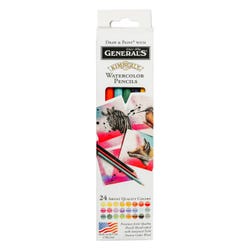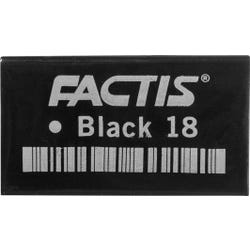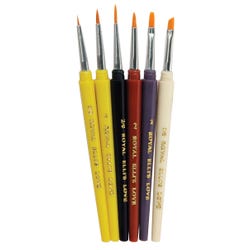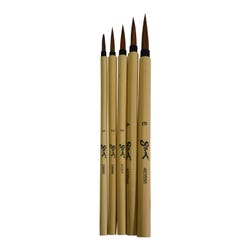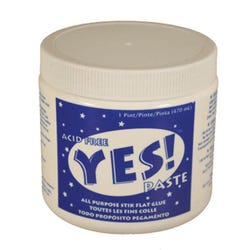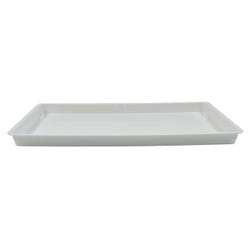Line is the Root of All Art

Description
Lesson Plan and Artwork by Phyllis M Annett
After studying the life and work of Vincent Van Gogh, students will use General Pencil’s Drawing Kit and Kimberly® Watercolor Pencils to create a mixed media line drawing. The composition will use many types of line and washes of color. Students will illustrate the meaning of an original quote they create about the “Element of Line in Art” or about “Art” in general.
Objectives
- Research quotes about “Line” and “Art” in general from Vincent Van Gogh and other artists who used the “Element of Line” in their work.
- Invent a quote about art, then create a line drawing with washes of color to illustrate the meaning of the student’s own quote, reflecting its mood and atmosphere based on the “Elements and Principles of Art”.
- Realize that the “Element of Line” is the foundation that yields form, shape, texture, and space to a work of art. The result is an artwork that has depth, emotion, and atmosphere.
Supplies Needed
General’s® #10 Drawing Pencil Kit
General’s® Kimberly® Watercolor Pencils, Assorted Colors, Set of 24
Factis® Magic Latex-Free Eraser, 1⅝ x 1 x 7/16”, Black, Pack of 18
Sax® Bamboo Watercolor Brushes, Assorted Sizes, Set of 5
Fabriano® Studio Watercolor Hot Press Pad, 9 x 12”, 140 lb, 12 sheets
Royal & Langnickel® Golden Taklon Detail Brush Set, Assorted Size, Set of 6
School Smart® Paint Tray, 13” x 18” x 1”
Yes!™ Paste Water Based Glue, 16 Oz Jar
*Here are the supplies needed for this lesson plan for reference. Find a convenient carousel of shoppable products for this lesson below.
Standards
Standard #1: Generate and conceptualize artistic ideas and work.
Standard #2: Organize and develop artistic ideas and work.
Standard #6: Convey meaning through the presentation of artistic work.
Standard #11: Relate artistic ideas and works with societal, cultural and historical context to deepen understanding.
Instructions
1
Study the work of Van Gogh, Picasso, Matisse, and Klee who created line drawings. Note the differences in styles. Find artist quotes: Klee, “A line is a dot that went for a walk.” DaVinci: “Art is never finished, only abandoned.” Chagall: “Art picks up where nature ends.” They used the “Element of Line” to depict atmosphere, mood, and emotion in their compositions made simply of specific types of line.
2
Recite the quote from Vincent Van Gogh: “Line is the root of all art”. Have a discussion with students as to what they think it means. How is wind depicted in the form of line? What about fields of grass and flowers? Clusters of any type of line shape will create a pattern with rhythm and movement. Van Gogh’s line drawings illustrate how types of line can achieve a certain atmosphere, mood, or emotion.
3
Inform students that they will invent a quote of their own. Line drawings will illustrate the atmosphere or emotions of their quote. Washes of watercolors enhance the work and set a mood.
4
Choose format: Landscape, City, Seascape, or Imagined. NOTE: The composition will not reach the edges of the paper, but rather form a random design around the lines drawn. This shape will ultimately be cut out and glued onto a new piece of watercolor paper that you have written your quote on.
5
Experiment with the various types of pencils from the General Pencil Drawing Kit on hot press watercolor paper, and decide which you will incorporate into your line drawing.
6
Each pencil has its own qualities, purpose, and effects from light to dark. Charcoal Pencil for darker, more bold lines, or a Charcoal White® pencil for highlighting over the watercolor pencil design. The Draughting™ pencil is an excellent pencil for repetitive line drawing. Using each will bring attention to specific areas of the composition. The foreground always has the strongest color. The lighter pencils help the lines to recede into the background. Use these to create areas of line to form shapes, textures, patterns, rhythm, and movement. Diagonal lines reach focal points and add perspective.
7
Refer to the “Elements and Principles of Design” for structure. Perfect and complete your line drawn composition.
8
Experiment with the Kimberly Watercolor Pencils to create areas of vivid color in the line drawing. Work out a color scheme for the painting. Decide where you want areas of color in the composition. Color these areas with the watercolor pencils.
9
Next, use a wet brush to go over the Kimberly Watercolor pencil areas to create brilliantly colored washes. Let it dry.
10
When all is dry, spray with Archival Spray lightly on BOTH the line drawing and the watercolor areas to prevent smearing. Set aside to dry.
11
When dry, cut around the drawing. It will look like a curvy shape. Set it aside.
12
With the General’s Graphite Drawing Pencil 6B, write the lettering for the quote on a new piece of watercolor paper.
13
Go over the letters of the quote with the Elegant Writer Calligraphy Markers.
14
Glue your Line drawing onto the watercolor paper, above the quote, below the line drawing, or where you feel appropriate for your design. DON’T VARNISH THE QUOTE. THE INK MAY RUN.
15
Apply criteria to evaluate your work and that of others.
16
Display and enjoy everyone’s artwork!




